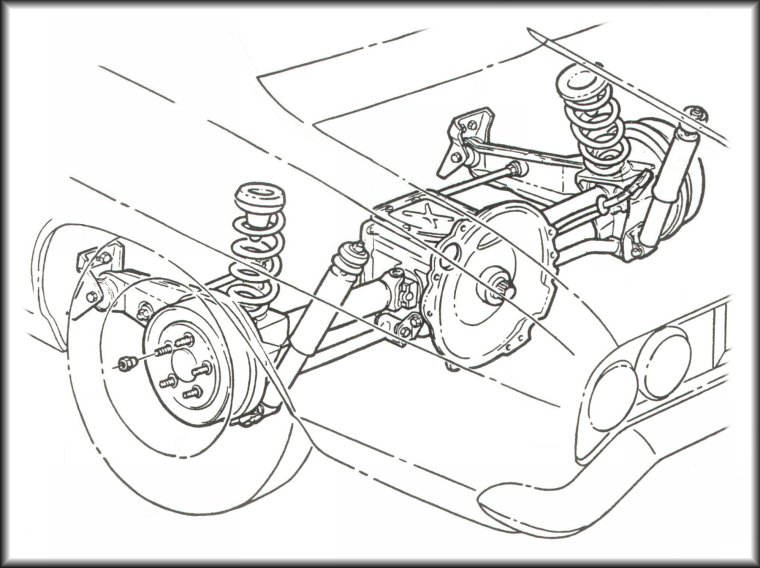

![]()
Corvair Handling and Stability
|
NHTSA studies and technical drawings aside, there is no test like personal experience. As someone who has rolled over in two Volkswagens (once wasn't enough), and as an individual who's pushed both early and late model Corvairs to their limits, I can say without reservation that the Corvair handles very well, particularly when in the hands of a competent driver. Competent drivers make it their business to know their cars. Competent Corvair drivers understand the physics of a rear-engine (tail heavy) design. The rear of the car will break traction before the front, where a front engine (nose heavy) design will break loose first at the front. Every car will go out of control if pushed too hard. When tires reach their limit of adhesion and lose traction, they are rendered incapable of propelling, steering, or effectively braking a vehicle. |
| Personal Preference
In the drawing at right we see the results of runaway understeer, oversteer, and a happier medium, a drift. The wonderful thing about oversteer is that it gives you the option to drift. Understeer puts you in the weeds. Oversteer, if managed correctly, can be corrected by a quick turn of the steering wheel away from the direction of the turn. In my opinion, a car that oversteers is more controllable and therefore, safer. |
|
|
Another point worth mentioning is the difference between today's radial tires and the bias-ply tires of the 1960s. Corvairs handle even better on modern tires than they did on the bias-ply factory originals. Have a look at the "Extra!" section of this site for some great examples of Corvairs set up with the modern tires, brakes and suspension pieces that keep them on par with some of today's finest handling cars. |

|
Above, we see a close-up of a technical drawing of the 1965 Corvair suspension. Illustrations such as this are readily available from the Corvair parts suppliers in the "Links" section of this site. Ask for a "Corvair Assembly Manual" for the model year that interests you. Thanks to Bob Helt and Kent Sullivan for their assistance in compiling this feature. |

Select from the navigation bar!